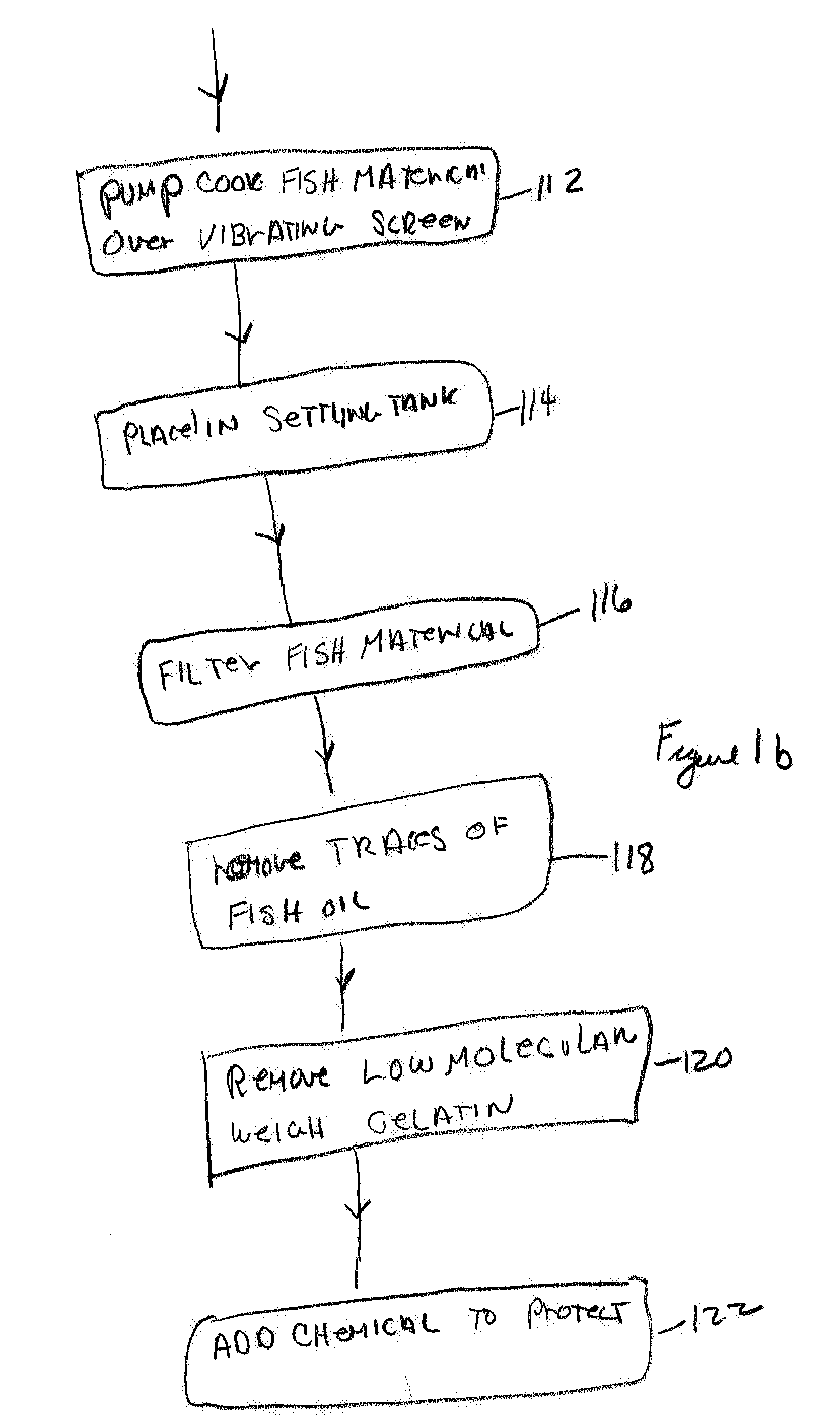Gelatin Production System
- Summary
- Abstract
- Description
- Claims
- Application Information
AI Technical Summary
Benefits of technology
Problems solved by technology
Method used
Image
Examples
Embodiment Construction
[0028]The fish fillets obtained after heading and evisceration are cut up and peeled by hand or machine to leave the fillets on one side and the skins on the other.
[0029]The method of the present invention is used to extract gelatin from either wet or dry fish waste, which may include skins, heads and frames, or any other suitable fish wastes. One advantage of the present invention is that the gelatin can be expected in a relatively short amount of time which can be measured from the time the feed material enters the process to the finished product. This short amount of time can be a short as five hours.
[0030]In step 102, an enzyme inactivation chemical can be added to the raw fish waste in order to keep the gelatin of the feed material from de-grading. For example, if the transportation trip is longer than approximately 30 minutes, this step is advisable. The enzyme inactivation chemical may include dry calcium hydroxide hydrate in the approximate amounts of 12.5 pounds to 15 pound...
PUM
 Login to View More
Login to View More Abstract
Description
Claims
Application Information
 Login to View More
Login to View More - R&D
- Intellectual Property
- Life Sciences
- Materials
- Tech Scout
- Unparalleled Data Quality
- Higher Quality Content
- 60% Fewer Hallucinations
Browse by: Latest US Patents, China's latest patents, Technical Efficacy Thesaurus, Application Domain, Technology Topic, Popular Technical Reports.
© 2025 PatSnap. All rights reserved.Legal|Privacy policy|Modern Slavery Act Transparency Statement|Sitemap|About US| Contact US: help@patsnap.com



